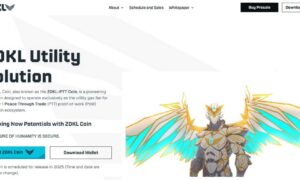If you’re building or using any type of Web3 application or interacting regularly with blockchain for information, you need to know what subgraphs are. For developers or Web3 founders, just understanding subgraphs can make your app highly performant while being extremely efficient with the cost. So why wait? Let’s understand subgraphs and see how custom subgraphs can help you get your decentralized app to the next level.
What are subgraphs?
Consider the subgraph as an API layer based on The Graph Protocol. The data this API layer provides is the information directly derived from a specific blockchain in the desired format indexed for high performance. If you didn’t understand anything from that sentence, let me help you with an example.
Suppose you own a medical shop. And you store the medicines in compartments. But those are not organized at all. So, when a customer asks for a specific medicine, you need to look in all compartments to see if the required medicine is available there; if not, look in another compartment and keep looking until you find a medicine. This is a very inefficient way of keeping things. Especially when your goal is to search them quickly when needed; this is basically how blockchains store information. Because they’re not optimizing for specific data retrieval, this doesn’t help developers trying to build decentralized apps that need this data quickly.
Now, let’s extend our analogy and introduce a systematic approach to it. Suppose you call your daughter to the shop and assign her the task of arranging the medicine in a systematic manner. Different sections should be made based on the type of medicine or in alphabetical order. Now, when the medicine is requested next time, you can quickly find it. Save a lot of your time and that of your customers. Gaining advantage in the form of the opportunity cost and customer satisfaction.
This is exactly what subgraphs achieve with the help of the graph protocol
The systematic arrangement of medicines is analogous to the graph protocol, and easy searching is analogous to the subgraphs or queries with the GraphQL language. So, the graph protocol indexes the blockchain data and makes it so that it can be easily queryable. This can especially come in handy when you have a custom subgraph for your specific application that serves your specific purpose.
By just satisfying simple eligibility criteria like holding some tokens, having a wallet, and a few more things, you can deploy your own custom subgraph that indexes the blockchain you want for quick access to the data. You can easily install The Graph command line interface on your system and some native tokens of the blockchain you’re trying to query, and with just a few steps, you’ll have your custom subgraph system ready. A few additional steps will help you connect it to the hosted service and initiate indexing by publishing it on The Graph. While setting up, you can specify what data and from to initiate indexing the data.
This gives you much flexibility when choosing the data sources, data types, and indexing options. Once your custom subgraph is up and running, you can rest assured of your app’s performance. Not just that, but because the data will be stored in an efficient way, you’ll save a lot of computing power while querying the data, making it double positive.
- The first positive is the fast retrieval of data. Hence, a faster app
- Second is the reduction in cost in terms of computer power.
Another great thing about subgraphs is that the protocol constantly scans the blockchain for any update in the required data and immediately indexes the data on the API. So, for the apps that require real-time access to data, this is one of the fastest ways to get that.
The difficulties involved in the basic structure of blockchains necessitate the existence of services like custom subgraphs. Because blockchains store all the data in a linear fashion, unorganized, it becomes tough to build apps around blockchains that require that information frequently. Indexing it increases the things you can do and achieve with quick access to the entire blockchain in the way you want.
Conclusion:
Custom subgraphs significantly enhance the performance of decentralized applications by making the information available to them in a fraction of the time it would otherwise take, also making the real-time data available at the same speed. This enables applications to serve more users or stop limiting themselves because of technology constraints.


































